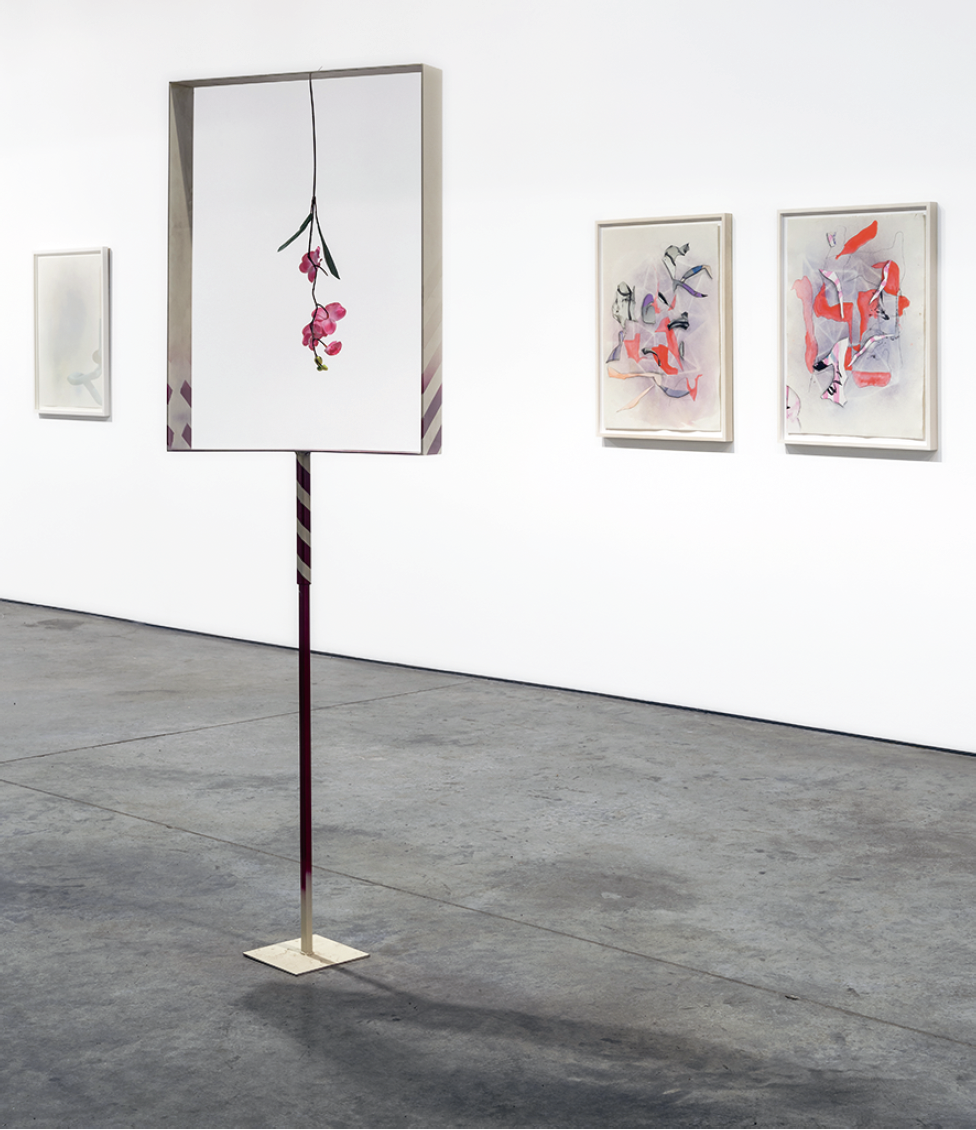David Armstrong Six
This quixotic constellation of sculptures, works on paper and video was invested with stochastic algorithms, conceptual rigor, surreal whimsy and scavenged integers of the real in more or less equal measure. Armstrong Six is an assemblage artist and his work has a decidedly contemporary tenor and twist. He is closer to a contemporary artist like Sarah Lucas than he is to Dada school and Schwitters and those who came before and after. Historicizing his work means weakening its radical newness, loosening its grip on parts and wholes. His “associative abstractions,” as he calls them, possess a governing ambiguity, embedded asymmetries and a gift for morphosis that set them apart.
These sculptures, like signs, have a binary order of meaning, which we can treat respectively as indexical and referential. Broadly speaking, indexical meaning is meaning that is contingent upon context, whereas referential meaning refers to meaning independent of context. But the indexicality here is not in any sense anthropocentric. The artist constructs these unlikely objects as assemblages that occupy a middle ground between instrument and integument, exoskeleton and inner membrane of meaning. It might be better to call them “referential indexicals” (also known as “shifters”), which denote a sign— here, a sculptural construct—that contains both referential and indexical meaning. They are not designer anthropomorphs built on the human frame; they are disruptive and enigmatic presences that harbour a subversive and ornery order of sculptural code.

David Armstrong Six, installation view, “Bracelets,” 2017. Photo: Guy L’Heureux. Courtesy Parisian Laundry, Montreal.
All these sculptures, these shifters, demonstrate a particularly deft and nimble facture. There is an elegance in the making intrinsic to the work. They seem indissolubly wed even at their most diasporic. Armstrong Six is an inveterate constructor and yet they are not elegant or tidy or easily assimilated objects. They are decidedly wayward and interrogatory things.
Armstrong Six casts a wide net over both source materials and signifiers, without burdening his sculptures with enervating echoes or closed quotations. He is an original in a world of carbon copies. And this is what makes his work stealthily, inescapably viral. This baker’s dozen of sculptures in wood, concrete, marble, metal, hand-blown glass and other materials are compositionally fluid and infect the gallery space with organic gravitas and alacrity.
As I wove my way in and out and around sculptures I was reminded of the work of the 19th-century French instrument maker Jules Duboscq, who was famous for the precision and well-machined beauty of his optical paraphernalia—optical benches such as the one in the University of Toronto’s Scientific Instruments Collection, comprising sundry elements such as a track for the light bench, mounting brackets, large and small brass lenses with measurement grids, prisms, crystal holder, metal rod, metal joint and so forth. The component parts in an Armstrong Six sculpture mirror the bench laid out with the full array of its accessories, and the sculptures themselves invite imaginative assembly and reassembly the longer we spend with them.
The framed works on paper have the consummate subtlety we have come to expect from this artist. Works like Untitled (mixed media on paper, 2017), in which myriad filaments mimicking brush strokes are arrayed with elasticity and de Kooning-like abandon, are hugely seductive.

David Armstrong Six, installation view, “Bracelets,” 2017. Photo: Guy L’Heureux. Courtesy Parisian Laundry, Montreal.
Most of these works were extracted or cannibalized from a vast repertoire of drawings that accumulated over time in the artist’s studio and were then harvested at will. They are cut and pasted and then reworked. Some have collage elements and some do not. Some seem to be collaged and are not, while others are. Armstrong Six draws incessantly, and the drawings are symbiotic with the sculptures.
The more atmospheric gas-like drawings that occupy the back wall are different in kind. They are all amorphous flux and flow and speak in whispers of hidden depths, like strange shapes glimpsed beneath layers of etched ice. These works were executed in 2009. They were done with spray paint at a generous remove, and the gaseous state of the markmaking lends them an ethereal and haunting mien. They offer a kind of saturated background radiation here that the artist refers to aptly as the “ether that contextualizes the scenography.”
It seems David Armstrong Six is trying to articulate a unified field theory of sculpture where only fragments exist, and crossing the gallery space meant getting caught up in the equivalent of a neural net, the interconnecting fibres of which, in silhouette, communicated something like bliss.
The artist’s feverishly experimental work over the last 20 years reminds us of that musical maverick Captain Beefheart, so bravely and tirelessly building his discography. This show was not exactly Armstrong Six’s Trout Mask Replica but certainly qualifies as his Doc at the Radar Station. And his work is nowhere near done. ❚
“Bracelets” was exhibited at Parisian Laundry, Montreal, from January 13 to February 11, 2017.
James D Campbell is a writer and curator in Montreal, and is a frequent contributor to Border Crossings.

